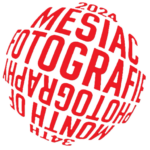Stredná a Východná Európa
central and eastern europe
judit szabó
VÝCHODOEURÓPSKY POHĽAD
EASTERN EUROPEAN PERSPECTIVE
Judit Szabó je jednou zo skrytých postáv súčasnej maďarskej fotografie. S fotografiami z jej celoživotnej tvorby sa môžeme stretnúť na mnohých miestach. Napríklad v Holandsku sa predalo viac než stotisíc kusov pohľadníc s jej fotografiami, no napriek štátnym vyznamenaniam je pre generáciu mladých fotografov takmer neznáma. Jej vnútorná hnacia sila ju núti vytvárať jedinečné obrazy, pričom pri výbere tém upriamuje pozornosť na dianie na ulici. Vzhľadom na svoju uzavretú povahu však dianie na ulici sleduje z diaľky ako pozorný, vonkajší pozorovateľ, bez zasahovania do toho, čo vidí.
Jej tvorivý prístup by sa dal najlepšie charakterizovať slovom humanistický. Aj preto si rozumela s Andrém Kertészom, ktorého fotografovala v Budapešti. Fotografie prezentované na výstave sú znovuobjavením diela, ktoré už desaťročia ležalo uložené v krabiciach. Môžeme tak nahliadnuť do fotografického vnímania už vytrácajúcej generácie, ktorá pred nástupom digitálnej fotografie definovala vizuálny rámec čiernobielej fotografie.
Kurátor: Péter Baki
Judit Szabó is one of the hidden figures of contemporary Hungarian photography. Her works are widely circulated—over one hundred thousand postcards featuring her pictures have been sold in the Netherlands—yet despite receiving state awards, her personality remains largely unknown to the younger generation of photographers. Her inner drive compels her to create unique images. When selecting themes for her photographs, she focuses on what unfolds on the street. Due to her reserved nature, she observes these street scenes from a distance, acting as an attentive yet detached observer, without interfering with what she witnesses.
Her creative approach could best be described as humanist, which is why she and André Kertész, whom she photographed in Budapest, shared a mutual understanding. The images displayed in the exhibition rediscover her work, which has remained in storage boxes for decades, offering us a glimpse into the photographic vision of a vanishing generation that shaped the visual language of black-and-white photography before the advent of digital photography.
Curator: Péter Baki

